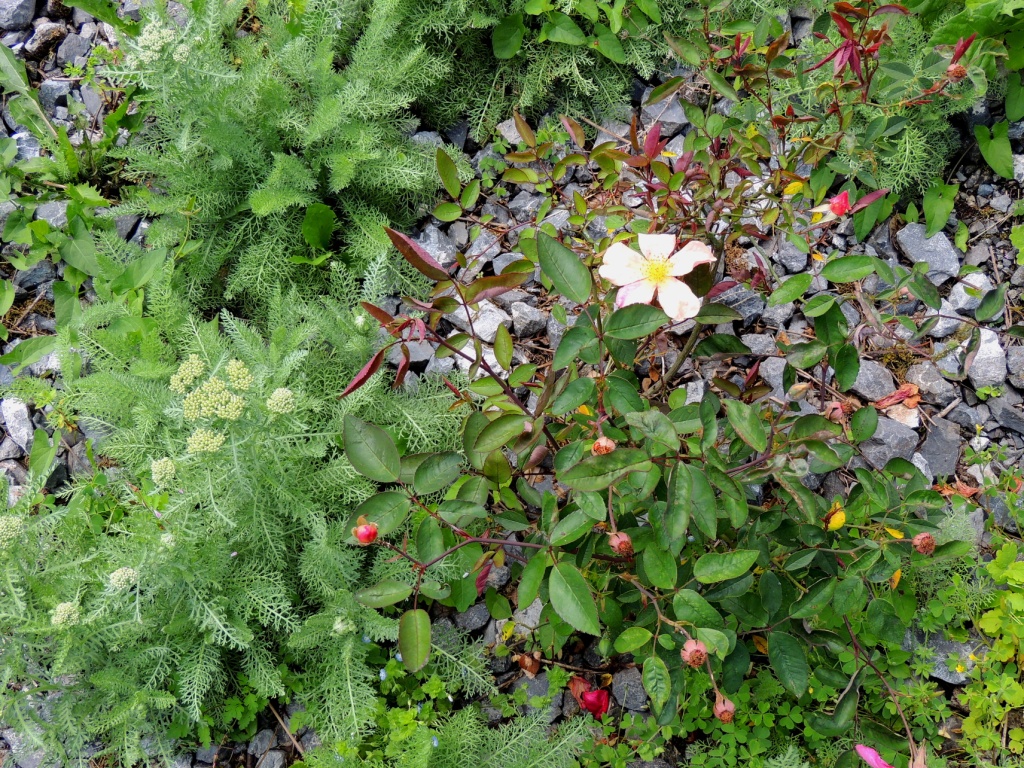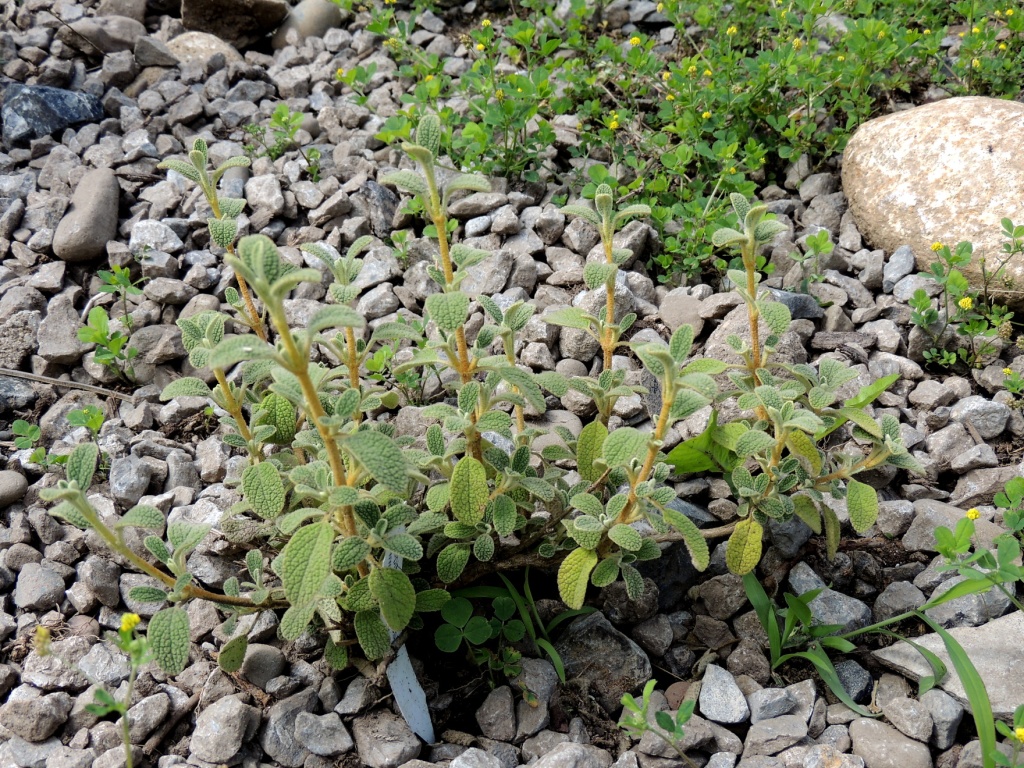
I am trying out a brave and maybe foolhardy experiment in the sloping, stony and hitherto uncultivated front garden. Given that it is stony and pretty unforgiving, as well as being in full sun almost all day, I had already thought that it could offer a great opportunity to grow cuttings of many of my dry garden plants from the old garden in Tostat. So, I had originally imagined that I would tip much more gravel on top of the stony ground and plant through that, having pulled or dug out as much as I could see that I didn’t want, too many dandelions and way too much bindweed and bramble for example. But….it wasn’t possible to buy any gravel in lockdown, and so, watching the early spring passing by, I went for the Big Gamble.
What if I just planted my small plants anyway? Waiting wasn’t a good option. Firstly, plants like this get impatient in pots generally having massed fibrous root systems or tap roots, both of which want to be in the ground when young. Secondly, I thought that, as long as I didn’t let the bindweed and bramble get too boisterous, with any luck my plants would begin to bulk up this year and be in really good shape next year to dominate any existing plants without me having to wage war on their behalf.
So, in they all went, probably more than 50 small plants grown as cuttings and some new plants bought small, as well as various others kindly given to the new garden. Most were planted by pickaxe as huge numbers of river boulders, probably from surrounding walls that had fallen down, were everywhere. One plant took more than an hour to get into the ground, as 4 or 5 massive 5kg boulders had to be hand extracted by pickaxe. There was a lot of sweat and much swearing.
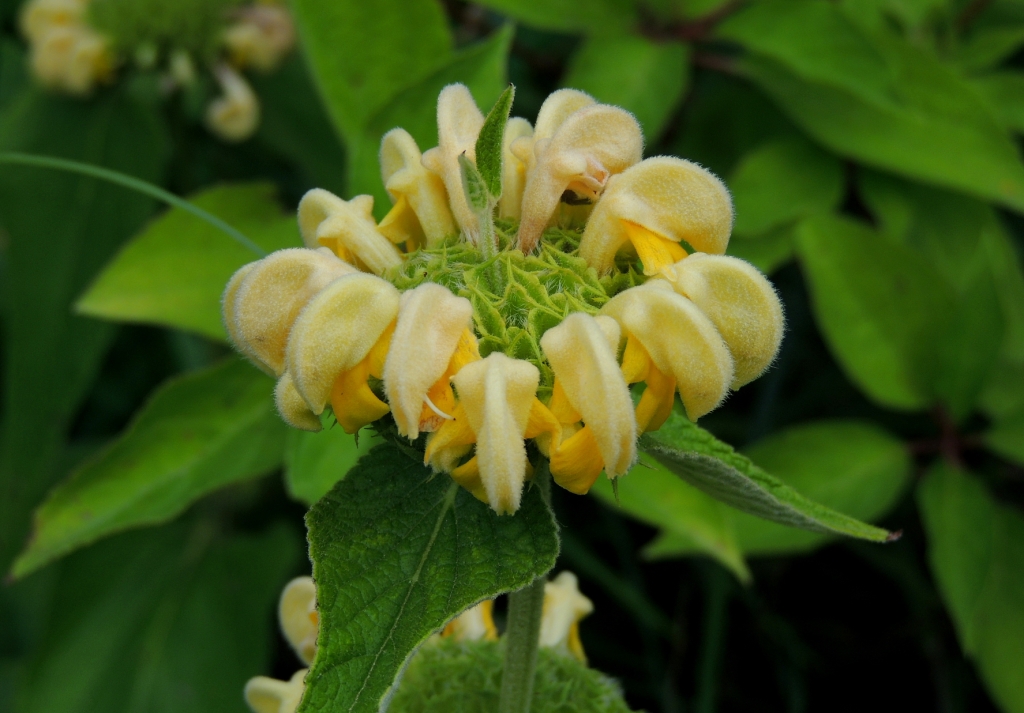
And 4 months later, I am quietly confident that the Big Gamble has paid off. To be completely fair, I still have quite a bit of bramble and bindweed, and a sprinkling of very mixed existing plants, such as self-sown Nigella and some flowering weeds. But I am not very bothered by them. The idea was to make a planting of plants that would respond well to the conditions, and let them manage the landscape, accepting those existing plants, whatever they are, that can co-exist. The new plants are slowly taking their place and beginning to be visible through the mix, which means that next year, the space will look very different. Some things have failed, particularly one or two of the bought plants- but my homegrown plants are gaining traction, particularly the Phlomis.
Phlomis lanata ‘Pygmy’, which flowered last Spring in Tostat, later unluckily (it is very small) was strimmed to the ground by Andy, so what came here was a seriously pygmy ‘Pygmy’. But the photo at the top of this post shows you the plant today- looking very good and seriously grown-up to the fullish height of 0.25m.
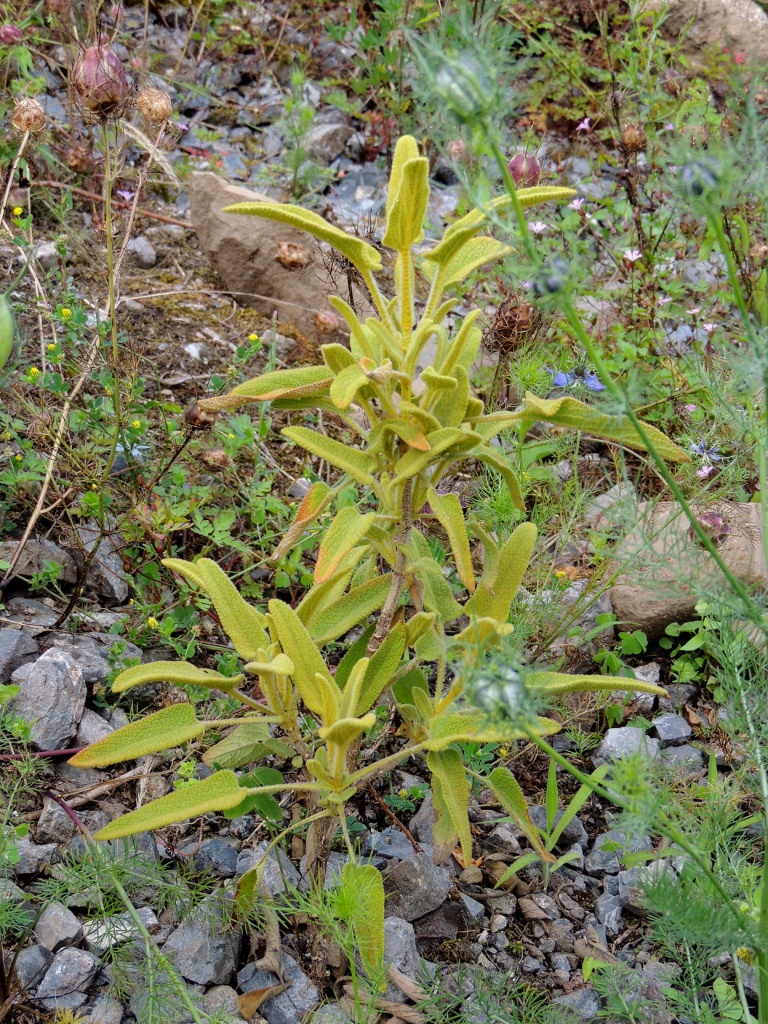
The golden Phlomis, x termessii is really looking at home. It has had a bit of a heat problem during our very dry patch of six weeks or so in Spring, but the new growth looks really great so I am looking forward to it tripling in size and flowering in April next year. Like everything else on the slope, I have only spot-watered when a plant looked to be in serious trouble, so I am ok with plants struggling a bit as this will stimulate better and deeper root growth for the future.
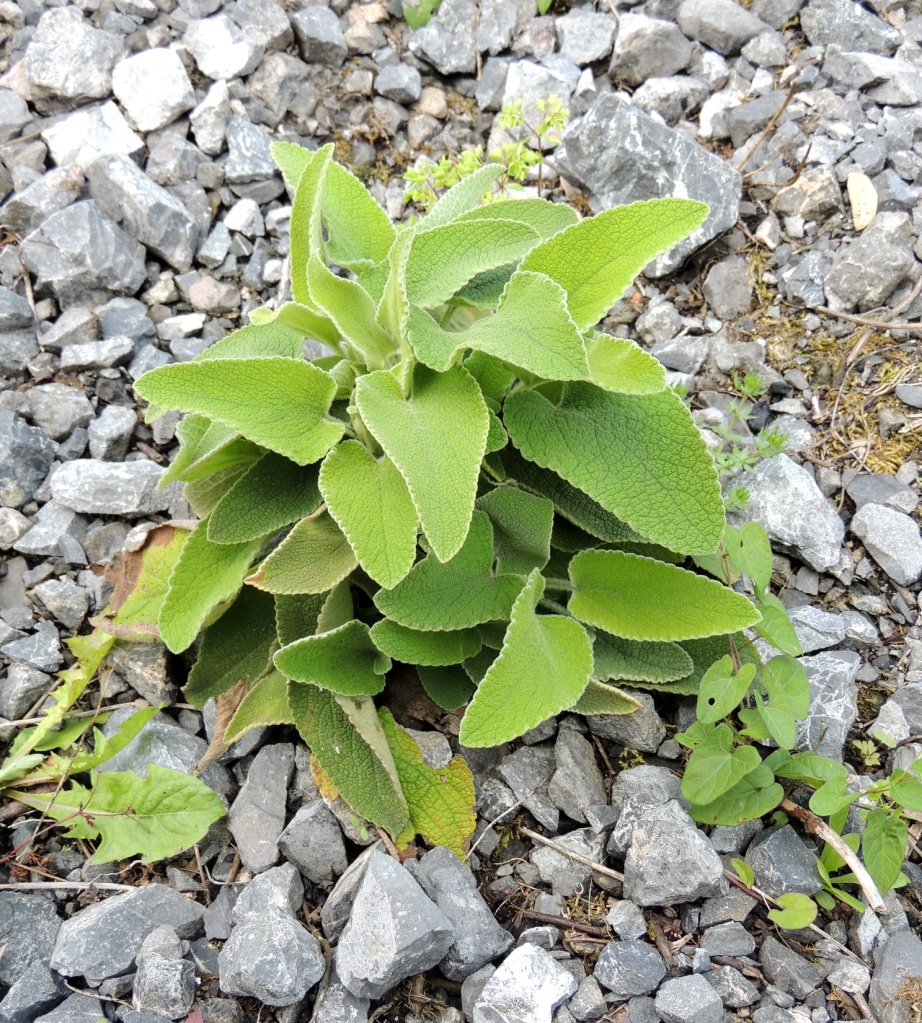
I am really looking forward to this Phlomis boveii, it has tall, pale pink flowers in the late Spring, and is bulking up really well. Early leaves got a bit burnt by dryness in February, but the plant has recovered well and looks set for next year.
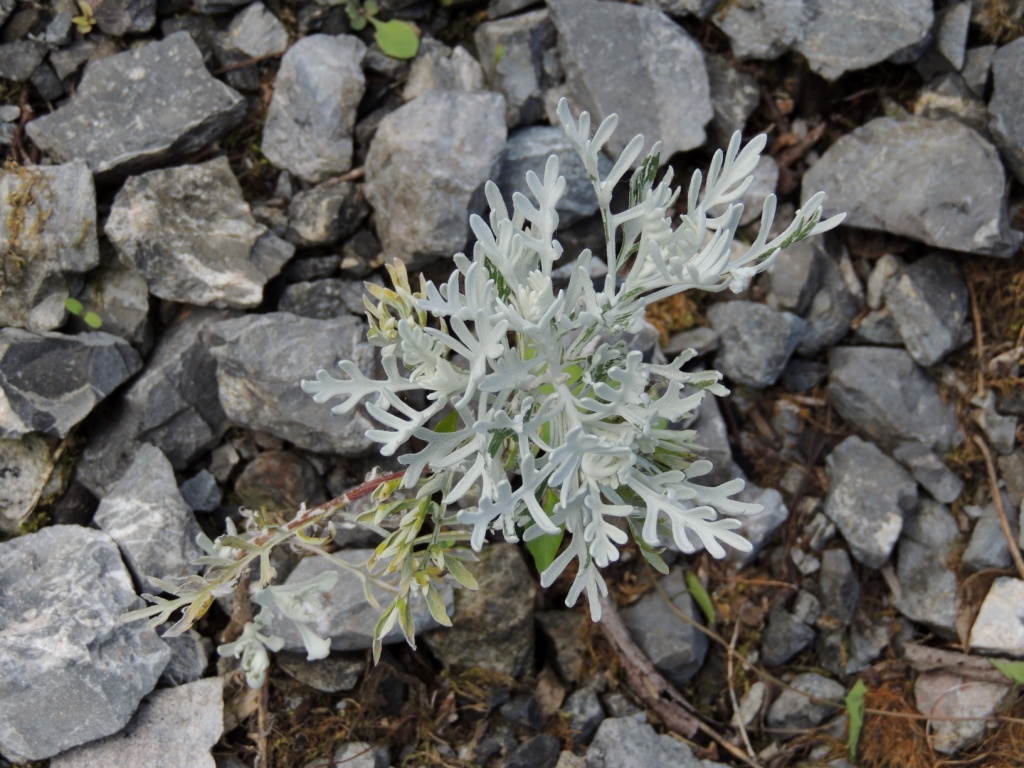
Moving to a plant that was new to me, I am surprised and delighted by this funny-looking Senecio vira-vira. It is incredibly brittle, so don’t plant it anywhere where it will be knocked or bashed. I didn’t put it in the best places, but the upside of bits breaking off is that they root in water in a bright kitchen within 10 days or so, so I have generated about half a dozen new plants already. The flowers are insignificant as the foliage is the real deal, silvery white and felted, so that it looks like very touchable marble. I really like it. I think it will make a mound in the end.
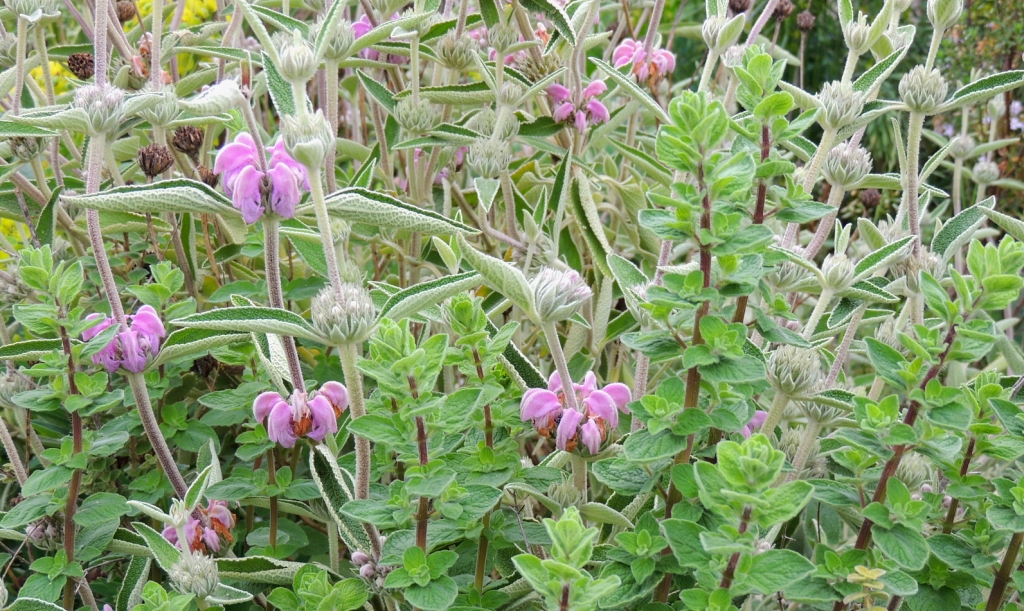
I didn’t bring Phlomis purpurea. A mistake. It is a lovely thing, so I am on the hunt for one.
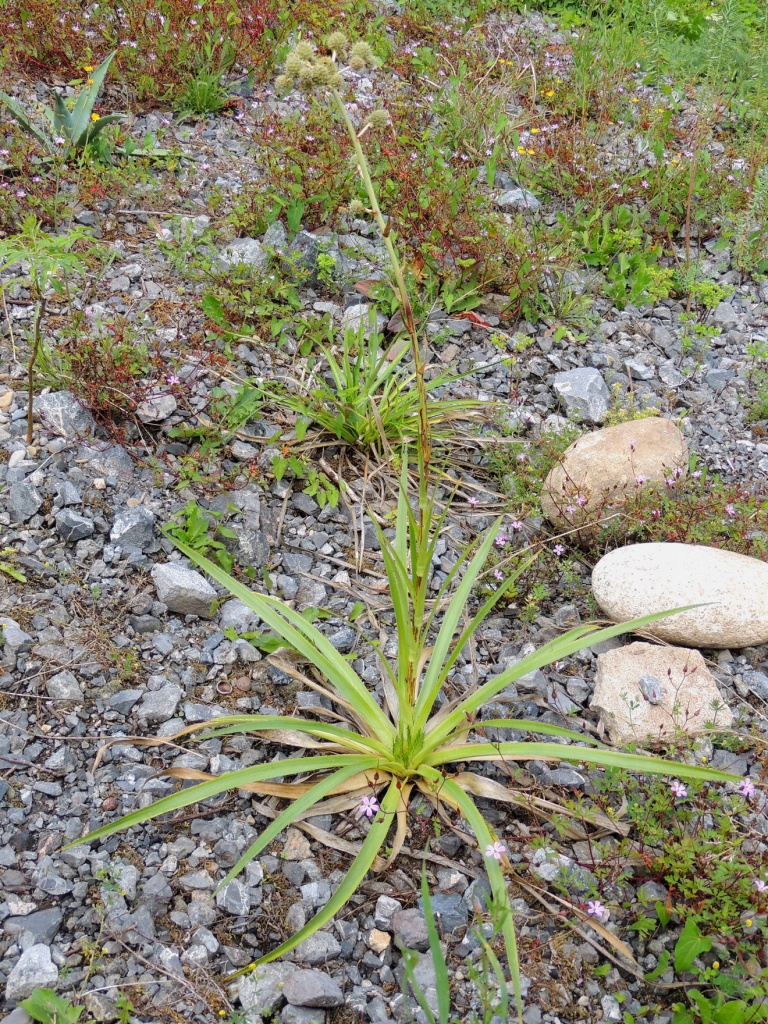
Eryngium eburneum has had a struggle but looking at the new growth at the base of the rosette, I reckon that it has cracked it and will be back bigger and stronger next year.
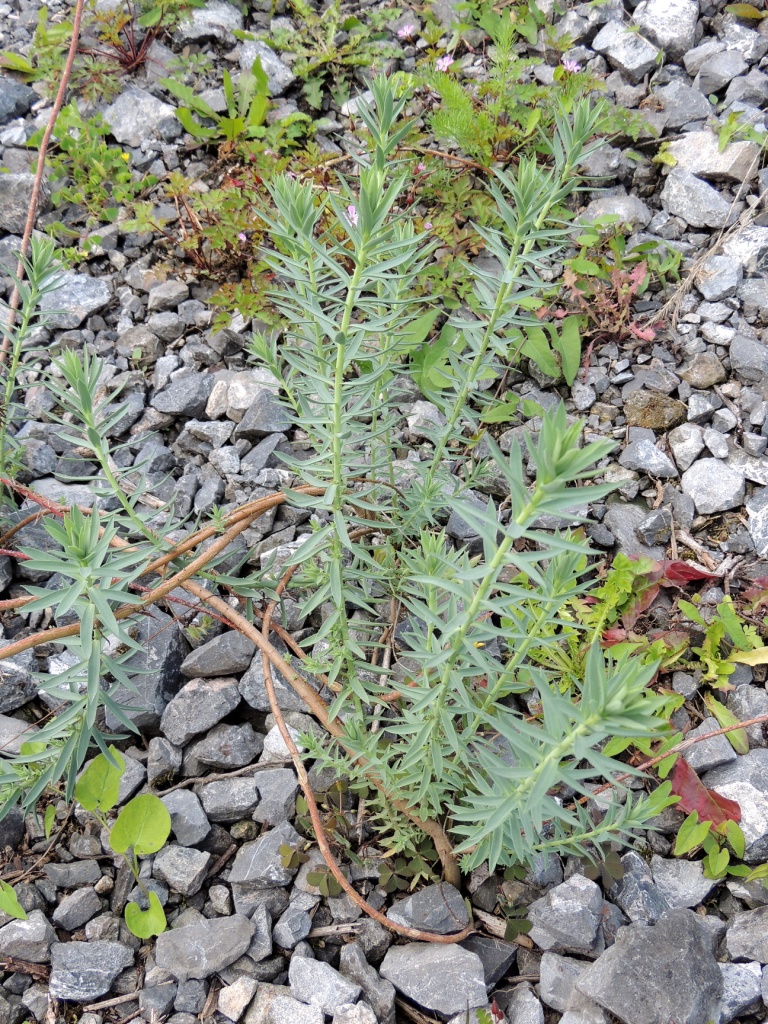
Euphorbia pithyusa ‘Ponte Leccia’ is a beautiful, elegant and refined euphorbia. It develops into a finely wafting mound which offers the same movement as a grass, with soft green fronds that blend in really well even if planted closely to other plants.
I went for broke and also wanted to try out planting Achillea crithmifolia as a protective barrier around my new acquired Rosa mutabilis. I have been reading a little about allelopathic plants, and thought that this would be an interesting experiment in miniature. So far so good, not much has got through, just a twig of bindweed which might be too butch for the Achillea to manage. We will see.
